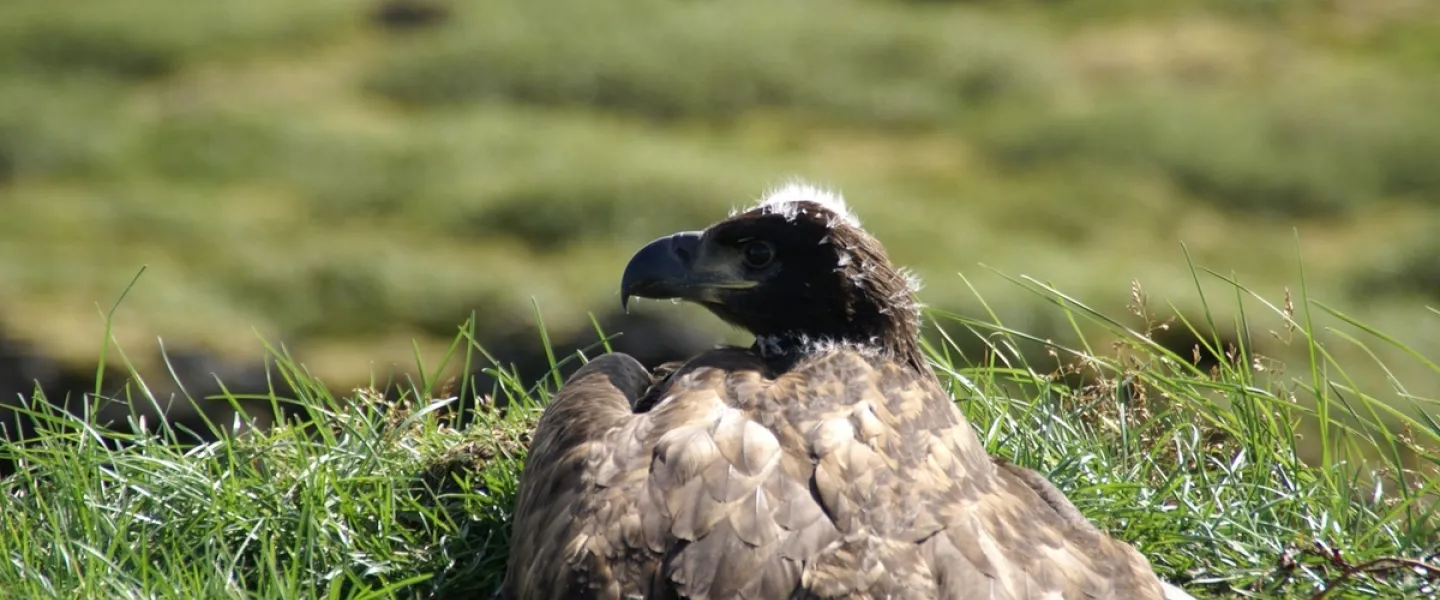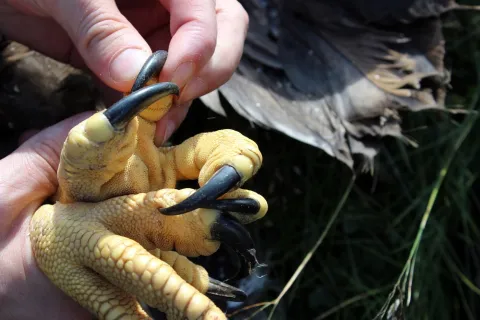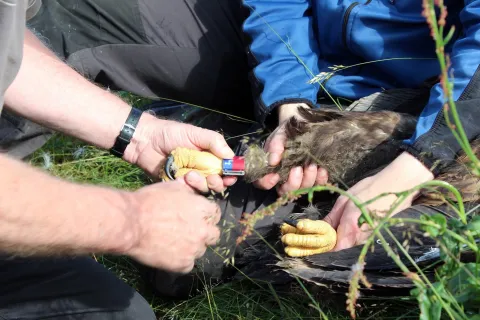
Eagles are a rare sight in Iceland, and not because they soar at such extraordinary heights, but because they were almost eradicated from the Icelandic ecosystem during the 20th century. The white-tailed eagle is one of the rarest nesting birds in Iceland. There are now slightly over 100 nesting pairs, in addition to the chicks who may end up somewhere else entirely. It is also a shy bird, although it does sometimes perch for long periods on high ledges surveying its territory and searching for prey. Most eagle sightings occur when the bird is on the wing, high above its hunting ground. They are easily recognisable thanks to their enormous fingered wings and ability to soar for long periods.
White-tailed eagles are so carefully monitored in Iceland that it is safe to say that every single bird is tagged as a chick in the nest. Until the second half of the 19th century, the species was much more widespread, nesting all across the country. Today it is a different story. Now all eagle territories, a little over a hundred in total, are along the west coast. There the birds have been closely observed by scientists and officials for decades.
Fertility rates are low compared to Europe
Although the white-tailed eagle has been a protected species for over a century, the population has grown slowly, although this has improved slightly after the practice of leaving out poison for Arctic foxes was banned in 1964. White-tailed eagles are not picky eaters and will feed on carcasses, although they mainly hunt live birds, especially fulmars which they catch on the wing. They will also snatch fish from the ocean, ponds, lakes and even rivers, seeking out in particular fish that have been stranded in pools and puddles by the retreating tide. In these areas there are also a lot of other birds which are prey for the eagles.





